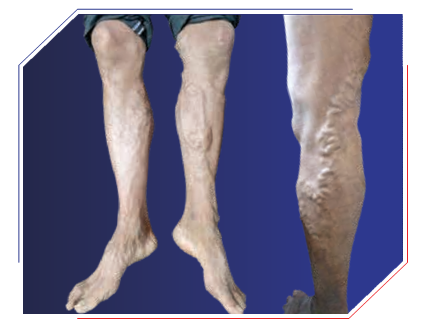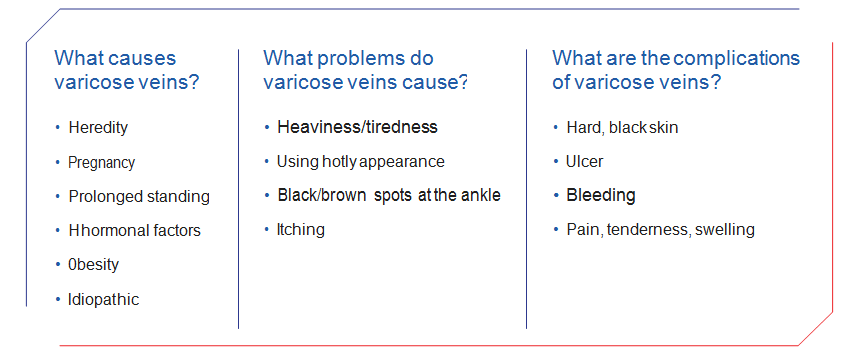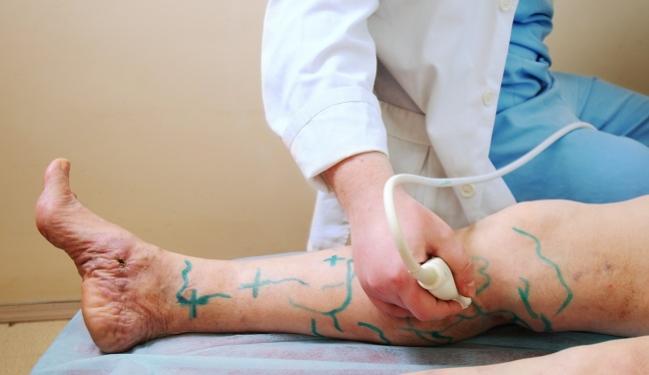Such as exercising, losing weight, not wearing tight clothes, elevating your legs, and avoiding long periods of standing or sitting — can ease pain and prevent varicose veins from getting worse.
Our Service
VARICOSE VEIN, RETICULAR VEIN AND SPIDER VEINS TREATMENT
Varicose veins are bulging, twisted, enlarged veins. Any vein may become varicose, but the veins most commonly affected are those in your legs and feet. That’s because standing and walking upright increases the pressure in the veins of your lower body.
For many people, Varicose Veins Laser and spider veins — a common, mild variation of varicose veins — are simply a cosmetic concern. For other people, varicose veins can cause aching pain and discomfort. Sometimes varicose veins lead to more-serious problems. Varicose veins may also signal a higher risk of other circulatory problems. Treatment may involve self-care measures or procedures by your doctor to close or remove veins.
WHAT ARE VARICOSE VEINS?
Varicose veins are a very common problem, appearing as twisting, bulging, rope-like cords on the legs. They are the result of problems with the valves within the venous system of the leg. All the veins in the leg contain one -way valves that keep blood flowing from the legs up towards the heart. When the valves become faulty, the blood gets accumulated in the vein, making it en large and swollen, called varicose veins. The veins become weak and twisted, and the lumps bulge out from just under the surface of the skin. Varicose veins usually occur in the legs but they can also be Formed in other parts of the body.


Treatments
Self-care
Compression Stockings
Wearing compression stockings is often the first approach to try before moving on to other treatments. Compression stockings are worn all day. They steadily squeeze your legs, helping veins and leg muscles move blood more efficiently. The amount of compression varies by type and brand.

Additional Varicose Vein Treatment
If you don’t respond to self-care, compression stockings, or if your condition is more severe, your doctor may suggest one of these varicose vein treatments:
Varicose veins that develop during pregnancy generally improve without medical treatment within three to 12 months after delivery.
Sclerotherapy
This procedure is suitable for smaller varicose veins or as an additional treatment in which your vascular specialist will inject a chemical directly in the varicose veins to block them.
Laser surgeries
Doctors are using new technology in laser treatments to close off smaller varicose veins and spider veins. Laser surgery works by sending strong bursts of light onto the vein, which makes the vein slowly fade and disappear. No incisions or needles are used.
Catheter-assisted procedures
In one of these treatments, your doctor inserts a thin tube (catheter) into an enlarged vein and heats the tip of the catheter. As the catheter is pulled out, the heat destroys the vein by causing it to collapse and seal shut. This procedure is usually done for larger varicose veins.
Vein stripping
This procedure involves removing a long vein through small incisions. This is an outpatient procedure for most people. Removing the vein won’t adversely affect circulation in your leg because veins deeper in the leg take care of the larger volumes of blood.
Ambulatory phlebectomy
Your doctor removes smaller varicose veins through a series of tiny skin punctures. Only the parts of your leg that are being pricked are numbed in this outpatient procedure. Scarring is generally minimal.
Endoscopic vein surgery
You might need this operation only in an advanced case involving leg ulcers. Your surgeon uses a thin video camera inserted in your leg to visualize and close varicose veins, and then removes the veins through small incisions. This procedure is performed on an outpatient basis.
